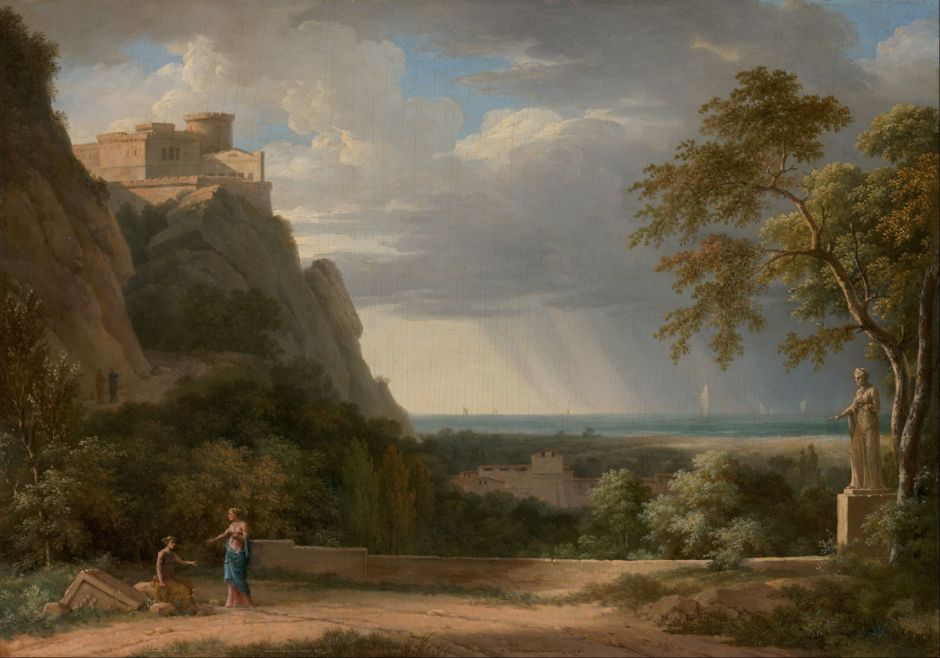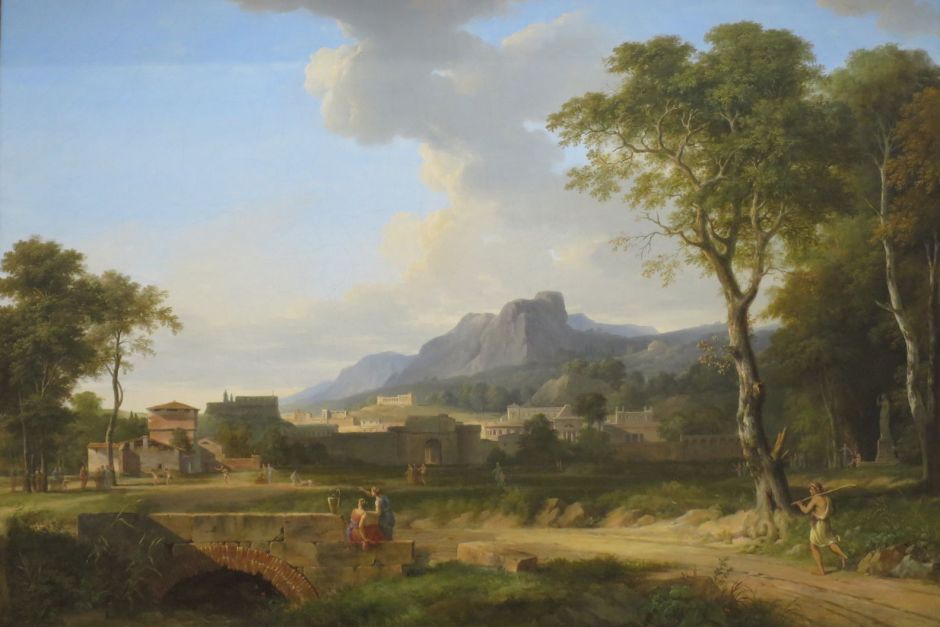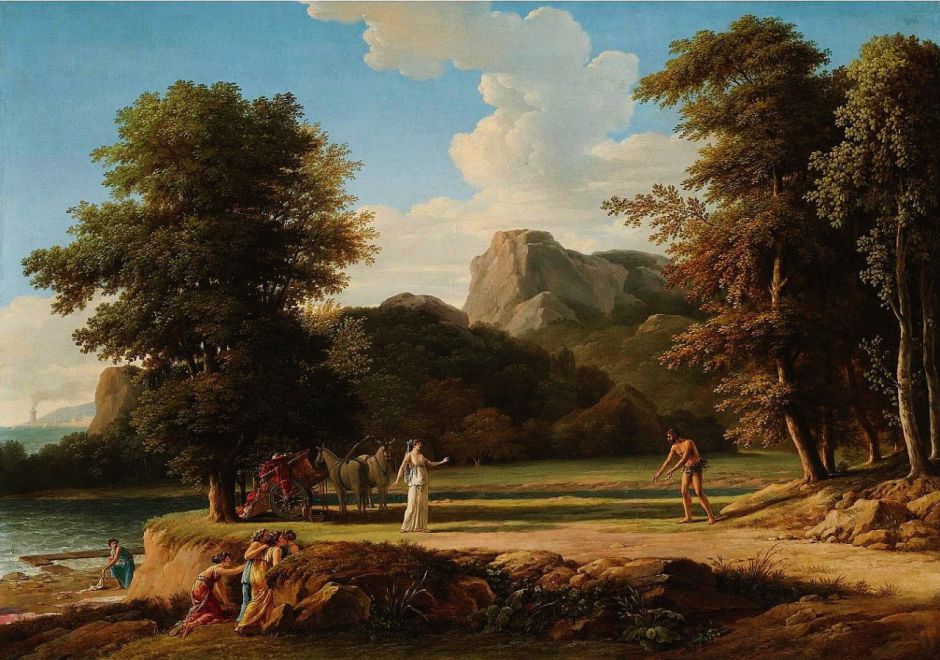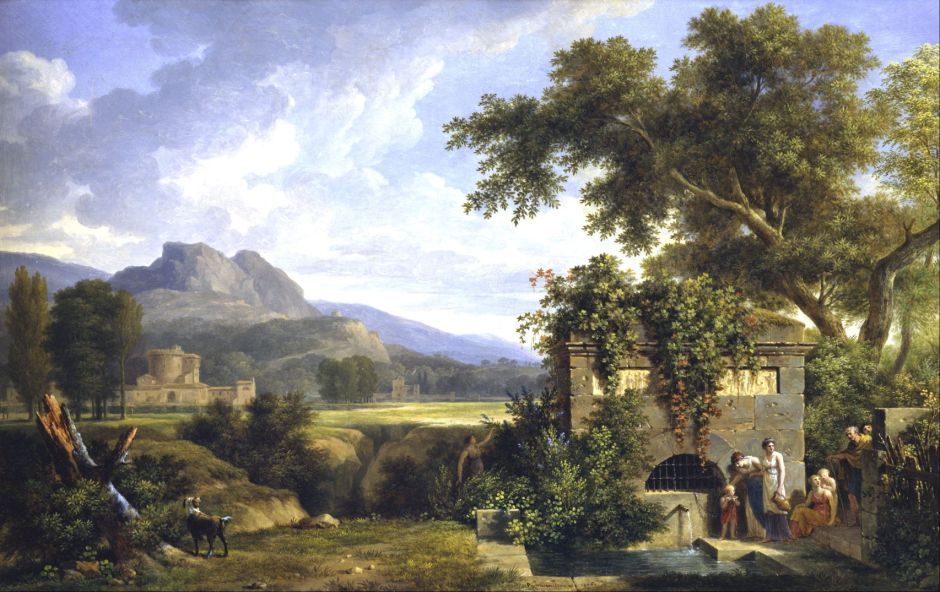Tomorrow will be the two hundredth anniversary of the death of the major French landscape painter, Pierre-Henri de Valenciennes (1750–1819). In this article, I will summarise his career with the aid of a small selection of his finished paintings. But his importance in the history of art centres on his practice of painting landscapes in oils in front of the motif – en plein air – and tomorrow’s article will look at his surviving oil sketches.
Valenciennes was born in the large city of Toulouse, in the south-west of France towards the foothills of the Pyrenees Mountains. He trained locally before being sponsored financially to make his first trip to Rome in 1769. By the early 1770s, he was back in France, probably in Paris, where he trained further in the studio of Gabriel François Doyen, a history painter.
In 1777, Valenciennes returned to Italy, where he probably remained until 1781. He was then in Paris again, where he is recorded as having met Claude Joseph Vernet, one of the most innovative landscape painters of the day. As I described yesterday, it is thought that Vernet recommended the practice of painting oil sketches en plein air, which Valenciennes then adopted.
Valenciennes returned to paint in the Roman Campagna between about 1782-85, during which he started to amass a personal image library of oil sketches. He then used those to compose finished landscape paintings in his studio.
In 1787, Valenciennes was elected to the Académie Royale de Peinture et de Sculpture in Paris. He was later appointed Professor of Perspective at the Académie, and promoted the cause of landscape painting to the point where, in 1816, it was incorporated in the Prix de Rome.

Valenciennes’s finished works develop from the idealised landscape of Nicolas Poussin and Claude Lorrain. Classical Landscape with Figures and Sculpture from 1788 shows a Mediterranean coastal view with an unusual echo in the posture of the sculpture at the right and a woman standing at the left. However the human figure is stripped to the waist and talking to a man (probably) who is seated. There seems to be some narrative here, although it is hard to discern the story.

A Capriccio of Rome with the Finish of a Marathon from 1788 is visibly much closer to the landscapes of Poussin. Groups of figures at the left and right are watching athletes run in to the finish of their race. Behind them is a town which uses some passages of Roman architecture, but isn’t recognisably a depiction of the city itself. It is an intermediate between the completely idealised landscapes of Poussin, and later topographically accurate views.

His Classical Landscape – Ulysses Imploring the Assistance of Nausicaä (1790) is not only a glorious landscape, but also comes very close to being a complete account of the story of Ulysses and Nausicaä, from Homer’s Odyssey.
Odysseus, wearing only a nappy/diaper of leafy branches, has just stepped out from the trees at the right, and is pleading his case with Nausicaä, who stands in sunlight slightly to the left of centre. Behind her are two mules by a chariot-like carriage. One handmaid is still down by the estuary washing clothes, but the others are huddled in hiding below a small cliff above the beach. Only the ball play in Homer’s account appears to be missing.
Further along the coast, shown at the left edge of the canvas, is a city which has a prominent pharos-like tower, a reference to the Phaeacians’ sea-going skills and Odysseus’ future travels. Although subtle, this is a good link to the future, and completes a peripeteia worthy of Poussin himself.

In 1796, Valenciennes painted a historical landscape of Alexander at the Tomb of Cyrus the Great, in which Alexander the Great discovers the neglected and damaged tomb of the great Persian emperor at Pasargadae in what is now Iran. This occurred after Alexander had sacked Persepolis. This tomb survives as a World Heritage Site.
In 1800, Valenciennes published his book Elements of Practical Perspective, in which he not only taught perspective but extolled the practice of making oil sketches of the landscape as studies for finished paintings. He considered that this was a better way to understand the myriad appearances of nature, and learn how to depict them in paint. Nearly a century later, Camille Pissarro still recommended this textbook for aspiring landscape painters.

Thanks to his extensive library of oil sketches, Valenciennes was able to bring a new impression of realism to views, such as his Classical Landscape with Figures Drinking by a Fountain from 1806.

Late in his career, Valenciennes painted this vivid reconstruction of the destruction of Pompeii in the Eruption of Vesuvius Starting on 24 August 79 AD (1813), which relied very little on his sketches.
Valenciennes taught a great deal too. His best-known student was the landscape painter Achille Etna Michallon.
Tomorrow, I will show examples of Valenciennes’ landscape oil sketches made during his stay in Rome between 1782-85.
References
Valenciennes on Wikipedia.
Biography at the National Gallery of Art.
Marlais M, Varriano J, and Watson WM (2004) Valenciennes, Daubigny, and the Origins of French Landscape Painting, Mount Holyoke College Art Museum. ISBN 0 972 1222 0 6.

